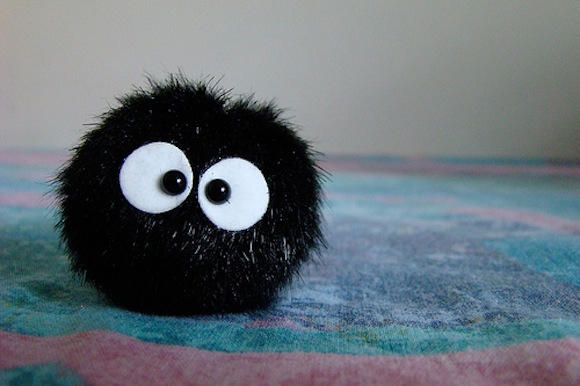
Known the world over for their heartwarming stories and breathtaking animation, Studio Ghibli’s animated feature films have been capturing the hearts and minds of movie lovers young and old for years. With Kaze Tachinu currently soaring high above our heads and Kaguya Hime no Monogatari scheduled to arrive in just a few short months, the studio is showing no signs of slowing down, with both productions sure to attract whole new legions of fans.
But did you know that Studio Ghibli’s movies are literally crawling with easter eggs, secrets and sly winks, and that many of Ghibli productions have links to popular culture the world over? Test your Ghibli knowledge and maybe even learn a thing or two with this list of 15 little-known facts about our favourite animated movies.
My Neighbor Totoro
1. Next stop, Cow Swamp!
Both the village of Matsugou 松郷 – the place where Satsuki and Mei’s new family home is situated – and the name Ushinuma 牛沼 (lit. “Cow Swamp”) that appears briefly on the Catbus’ destination plate are in fact real locations that can be found in the town of Tokorozawa, Saitama Prefecture, which is just north of Tokyo.
2. Growing up fast
Mei’s older sister Satsuki was originally supposed to be a fourth-grade elementary school student, but after realising that both her way of speaking and assertive behaviour made her seem much developed in years, the decision was made to make her a sixth-grader instead.
3. Just stopping by
Pixar producer John Lasseter and Ghibli’s Hayao Miyazaki have been friends for more than 30 years, first meeting when My Neighbor Totoro was still in early stages of production. For this reason, Lasseter decided to give Totoro a cameo in Toy Story 3, having him appear in the background for a few seconds during a scene taking place in human character Bonnie’s bedroom.
4. Creepy Science
Earlier this year, scientists in Vietnam named a newly discovered species of velvet worm the Eoperipatus Totoro on account of its resemblance to the multi-legged Catbus from My Neighbor Totoro. Yet another reason why science is awesome.
Kiki’s Delivery Service
5. It’s all in the name
The bakery belonging to Osono-san and her closed-mouthed husband where Kiki finds accommodation has “Gütiokipänja” written in the window. A joke written by the writer of the original story, Eiko Kadono, the sign is read “guu choki pan ya” in Japanese and is actually a reference to guuchokipa, an alternative name for the game jankenpon (or rock, paper, scissors in English) with the final word “pa” replaced by the Japanese word “pan“, which means bread. The name “Rock, Scissors, Bread Shop” doesn’t exactly roll off the tongue in English though, so translating writers cleverly renamed the shop “Good Cooking Pan Bakery” which has a similar ring to the original moniker.
6. Kanji not your strong point?
At the close of the movie, Kiki writes a letter to her parents, mentioning her friends, or tomodachi 友達 in Japanese. Eagle-eyed viewers note, however, that Kiki has missed a stroke from the second kanji character, 達, which would result in a big fat X in kanji class at school. It’s likely that Miyazaki and his team added this mistake intentionally to show that, although Kiki has matured greatly throughout the course of the film, she is still young and has more to learn. That or she spends too much time texting friends and, like so many kids today, struggles to write kanji by hand…
7. Careful supervision
Miyazaki, who directed Kiki’s Delivery Service, makes a brief cameo during the climax of the film. When Kiki manages to rescue her friend Tombo from the sky, a street labourer proudly yells out “That’s my broom she used!” If you look carefully you’ll see an animated version of Miyazaki himself in the top-right corner of the frame.
Nausicaä of the Valley of the Wind
8. La, la, lalala la la…
Nausicaä’s Theme, the haunting song featuring a child’s voice that played throughout the movie, was actually sung by the young daughter of Joe Hisaishi (real name Mamoru Fujisawa), the man behind the musical scores of nearly every Studio Ghibli movie from My Neighbor Totoro to this year’s Kaze Tachinu. Mai Fujisawa (or simply Mai 麻衣 as she’s known to her fans) grew up to become a professional singer, and even went on to sing Kokoro no Kakera, the beautiful theme tune for the Japanese version of the Level-5 and Studio Ghibli-developed video game Ni no Kuni.
9. Monster maker turned gentleman
The fearsome God Warrior that is prematurely awakened during the course of the film was created and animated by none other than Hideaki Anno, the man who would later write and direct the anime adaptation of Neon Genesis Evangelion. More recently, Anno returned to work with Studio Ghibli, voicing the mild-mannered lead character Jiro Horikoshi, the real-life designer of the Mitsubishi A6M Zero fighter plane, in this year’s summer hit Kaze Tachinu.
10. Howl of the beast
The cry of the Ohmu, the giant armoured creatures that heroine Nausicaä battles to protect during the movie, is actually the sound of musical legend Tomoyasu Hotei‘s electric guitar. Guitarist for hugely popular Japanese rock band Boøwy in the 1980s, Hotei is perhaps best known in the West for his track “Battle Without Honor or Humanity“, which became the theme tune to Quentin Tarantino’s 2003 swords-and-jumpsuits smash Kill Bill.
Laputa: The Castle in the Sky
11. Nice little earner
The Castle in the Sky was actually made as a way of repaying loans taken to fund another production Studio Ghibli producer Isao Takahata was working on at the time. Little did the company know that they’d still be making money from their dramatic airborne adventure nearly 30 years later.
12. The fox returns
Towards the end of the film, kitsune risu (flying fox squirrels) the like of which Princess Nausicaä keeps as a pet in her own movie, can be seen frolicking in the lush vegetation of the floating castle’s gardens. How on earth did they get up there…?
13. Parusu!
The terrible word from the spell of destruction that brings much of the great city tumbling down at the climax of Castle in the Sky actually means “peace” and “harmony” in Turkish. Whenever the animation is aired on Japanese TV, fans all over the country are known to simultaneously tweet the word at the exact moment Sheeta and Pazu say it.
And two more just for fun
14. See, this is why I never bring friends home
Veteran Ghibli animator Katsuya Kondō used his own daughter as the model for chubby-cheeked Ponyo (in her human form, we hope!) in the 2008 movie of the same name. It has never been confirmed, but the character Chihiro from Spirited Away is also thought to be based on a member of staff’s daughter. It can’t be easy being a creative’s kid…
15. Why so serious?
There is a long-standing urban legend here in Japan that the cute and fluffy giant Totoro is actually a shinigami or “death god”, only visible to children who are close to death or have already died. Many suggest that during the movie when her sandal is found in the lake, Mei has actually drowned and that Satsuki knowingly denies that it belongs to her sister, instead going off in search of Totoro and accidentally stepping into the land of the dead herself. Finally, the only reason Satsuki and Mei’s presence was noticed by their mother at the end of the story, the po-faced pundits maintain, is because she too is close to death and will not recover from her illness. Studio Ghibli has repeatedly denied these claims and last year asked once and for all for everyone to lighten up and just enjoy the film for what it is, but still the rumours persist.
Well, we hope you enjoyed that list of trivia! Be sure to let us know if you have any other nuggets of Ghibli gold to share in the comments section below.
Ref: Niconico News (Japanese) Top image All other images via Amazon JP

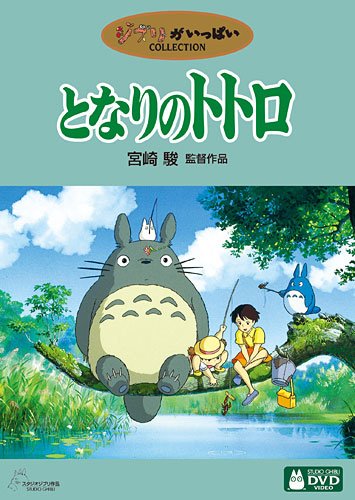
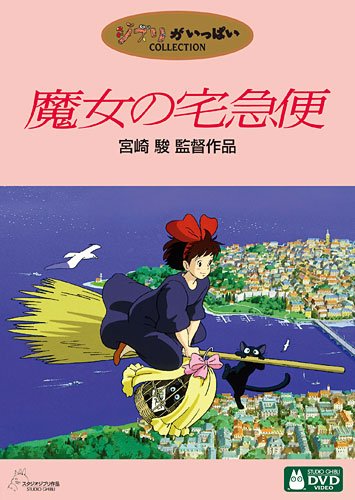
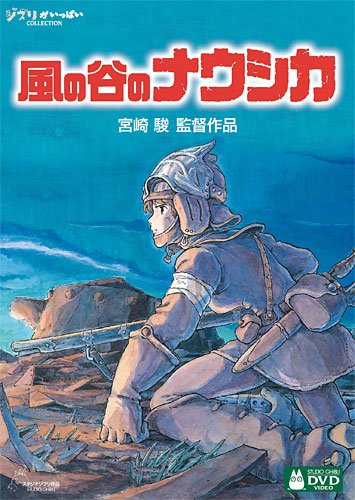
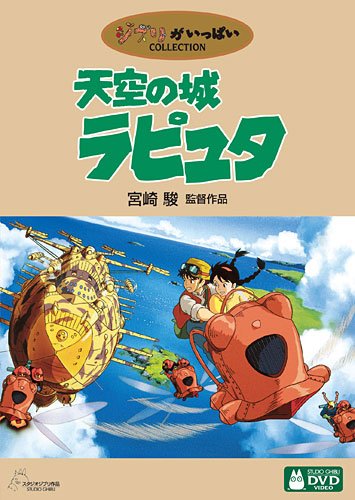
 Japanese fans rank the top 10 most beautiful female characters from Studio Ghibli anime movies
Japanese fans rank the top 10 most beautiful female characters from Studio Ghibli anime movies How to properly pronounce “Ghibli” and other fun trivia about the legendary animation studio
How to properly pronounce “Ghibli” and other fun trivia about the legendary animation studio Studio Ghibli reveals surprising secrets hidden in My Neighbour Totoro
Studio Ghibli reveals surprising secrets hidden in My Neighbour Totoro Studio Ghibli anime stamps help seal your love for popular movie characters
Studio Ghibli anime stamps help seal your love for popular movie characters New survey reveals which Studio Ghibli heroine Japanese audiences relate to the most
New survey reveals which Studio Ghibli heroine Japanese audiences relate to the most Ramen restaurant’s English menu prices are nearly double its Japanese ones, denies discriminating
Ramen restaurant’s English menu prices are nearly double its Japanese ones, denies discriminating This quiet forest cafe in Japan lets you read all day in the house of a famous author
This quiet forest cafe in Japan lets you read all day in the house of a famous author Here’s what our bachelor writers ate over the New Year’s holiday in Japan
Here’s what our bachelor writers ate over the New Year’s holiday in Japan Nearly one in ten young adults living in Japan isn’t ethnically Japanese, statistics show
Nearly one in ten young adults living in Japan isn’t ethnically Japanese, statistics show 7-Eleven Japan’s ramen-cooking robot whipped us up a bowl of noodles【Taste test】
7-Eleven Japan’s ramen-cooking robot whipped us up a bowl of noodles【Taste test】 Rakuten randomly offers 58 New Year’s osechi feasts in Japan, but did we get a star or a dud?
Rakuten randomly offers 58 New Year’s osechi feasts in Japan, but did we get a star or a dud? Japanese thug wear from Birth Japan perfect for those breaking bad next year
Japanese thug wear from Birth Japan perfect for those breaking bad next year Cosplay costume room tour by Japan’s number-one cosplayer Enako is an eye-opener【Video】
Cosplay costume room tour by Japan’s number-one cosplayer Enako is an eye-opener【Video】 Is this the most relaxing Starbucks in Japan?
Is this the most relaxing Starbucks in Japan? That time Seiji called JASRAC to ask why he didn’t get paid royalties for his song being on TV
That time Seiji called JASRAC to ask why he didn’t get paid royalties for his song being on TV Japanese beef bowl chain Sukiya’s 2026 Smile Box lucky bag basically pays for itself
Japanese beef bowl chain Sukiya’s 2026 Smile Box lucky bag basically pays for itself Starbucks Japan ready to get Year of the Horse started with adorable drinkware and plushies【Pics】
Starbucks Japan ready to get Year of the Horse started with adorable drinkware and plushies【Pics】 Hayao Miyazaki says Happy New Year to Studio Ghibli fans with new art for Year of the Horse
Hayao Miyazaki says Happy New Year to Studio Ghibli fans with new art for Year of the Horse Cup Noodle tries an authentic Jiro-style ramen, but something’s not quite right
Cup Noodle tries an authentic Jiro-style ramen, but something’s not quite right Top Japanese cosplayer Enako returns to Comiket after 6 years, creates mayhem with admirers
Top Japanese cosplayer Enako returns to Comiket after 6 years, creates mayhem with admirers The best Starbucks Japan Frappuccinos we want to drink again in 2026
The best Starbucks Japan Frappuccinos we want to drink again in 2026 We revisited Sweets Paradise after a decade to see if Japan’s dessert buffet still delivers
We revisited Sweets Paradise after a decade to see if Japan’s dessert buffet still delivers Pizza Hut Japan’s hot lucky bags are perfect for a New Year’s pizza party
Pizza Hut Japan’s hot lucky bags are perfect for a New Year’s pizza party Majority of Japanese mayors say foreign residents are essential but most see good and bad effects
Majority of Japanese mayors say foreign residents are essential but most see good and bad effects 7-Eleven Japan starts new temporary luggage storage service in over 300 branches
7-Eleven Japan starts new temporary luggage storage service in over 300 branches Disillusionment at Tsukiji’s tourist-target prices led us to a great ramen restaurant in Tokyo
Disillusionment at Tsukiji’s tourist-target prices led us to a great ramen restaurant in Tokyo Starbucks teams up with 166-year-old Kyoto doll maker for Year of the Horse decorations【Photos】
Starbucks teams up with 166-year-old Kyoto doll maker for Year of the Horse decorations【Photos】 Tokyo considering law requiring more trash cans following litter increase in heavily touristed area
Tokyo considering law requiring more trash cans following litter increase in heavily touristed area Tokyo’s Tsukiji sushi neighborhood asks tour groups to stay away for the rest of the month
Tokyo’s Tsukiji sushi neighborhood asks tour groups to stay away for the rest of the month Tokyo event lets you travel back in time, for free, to celebrate 100 years since Showa era start
Tokyo event lets you travel back in time, for free, to celebrate 100 years since Showa era start Japan may add Japanese language proficiency, lifestyle classes to permanent foreign resident requirements
Japan may add Japanese language proficiency, lifestyle classes to permanent foreign resident requirements Sanrio theme park in Japan announces plans to expand into a Sanrio resort
Sanrio theme park in Japan announces plans to expand into a Sanrio resort Lacquerware supplier to emperor of Japan and Pokémon team up for new tableware
Lacquerware supplier to emperor of Japan and Pokémon team up for new tableware Survey asks foreign tourists what bothered them in Japan, more than half gave same answer
Survey asks foreign tourists what bothered them in Japan, more than half gave same answer Japan’s human washing machines will go on sale to general public, demos to be held in Tokyo
Japan’s human washing machines will go on sale to general public, demos to be held in Tokyo Japan’s deadliest food claims more victims, but why do people keep eating it for New Year’s?
Japan’s deadliest food claims more victims, but why do people keep eating it for New Year’s? We deeply regret going into this tunnel on our walk in the mountains of Japan
We deeply regret going into this tunnel on our walk in the mountains of Japan Studio Ghibli releases Kodama forest spirits from Princess Mononoke to light up your home
Studio Ghibli releases Kodama forest spirits from Princess Mononoke to light up your home Major Japanese hotel chain says reservations via overseas booking sites may not be valid
Major Japanese hotel chain says reservations via overseas booking sites may not be valid Put sesame oil in your coffee? Japanese maker says it’s the best way to start your day【Taste test】
Put sesame oil in your coffee? Japanese maker says it’s the best way to start your day【Taste test】 No more using real katana for tourism activities, Japan’s National Police Agency says
No more using real katana for tourism activities, Japan’s National Police Agency says Starbucks Japan reveals new sakura drinkware collection, inspired by evening cherry blossoms
Starbucks Japan reveals new sakura drinkware collection, inspired by evening cherry blossoms Updated cherry blossom forecast shows extra-long sakura season for Japan this year
Updated cherry blossom forecast shows extra-long sakura season for Japan this year The top 10 Studio Ghibli anime homes that fans would most like to live in
The top 10 Studio Ghibli anime homes that fans would most like to live in My Neighbour Totoro storyboards reveal secrets behind the Ghibli anime movie
My Neighbour Totoro storyboards reveal secrets behind the Ghibli anime movie Studio Ghibli theme park designs unveiled, five special zones bring anime movie worlds to life
Studio Ghibli theme park designs unveiled, five special zones bring anime movie worlds to life Japanese men rank their favorite female Studio Ghibli characters
Japanese men rank their favorite female Studio Ghibli characters Studio Ghibli releases anime art calendars for 2025
Studio Ghibli releases anime art calendars for 2025 Studio Ghibli celebrates Mother’s Day with special Totoro flower deliveries
Studio Ghibli celebrates Mother’s Day with special Totoro flower deliveries Studio Ghibli anime films get American comic book style update with new glassware collection
Studio Ghibli anime films get American comic book style update with new glassware collection A visit to the Studio Ghibli theme park for a secret look at the new areas
A visit to the Studio Ghibli theme park for a secret look at the new areas Studio Ghibli releases new anime cushions for Totoro and Kiki’s Delivery Service fans
Studio Ghibli releases new anime cushions for Totoro and Kiki’s Delivery Service fans Studio Ghibli’s Mother’s Day corn set is a heartwarming gift for Totoro fans
Studio Ghibli’s Mother’s Day corn set is a heartwarming gift for Totoro fans Which Studio Ghibli house would you most like to live in?
Which Studio Ghibli house would you most like to live in? British newspaper ranks the best Studio Ghibli films and reader passions flare
British newspaper ranks the best Studio Ghibli films and reader passions flare The Place Where Totoro Was Born: New Studio Ghibli book includes art by Hayao Miyazaki’s wife
The Place Where Totoro Was Born: New Studio Ghibli book includes art by Hayao Miyazaki’s wife Studio Ghibli unveils My Neighbour Totoro miniature house model
Studio Ghibli unveils My Neighbour Totoro miniature house model Studio Ghibli and Akira anime movie cels up for bid in Heritage Auctions animation event
Studio Ghibli and Akira anime movie cels up for bid in Heritage Auctions animation event The secret behind this mysterious Studio Ghibli x Pixar image
The secret behind this mysterious Studio Ghibli x Pixar image
Leave a Reply